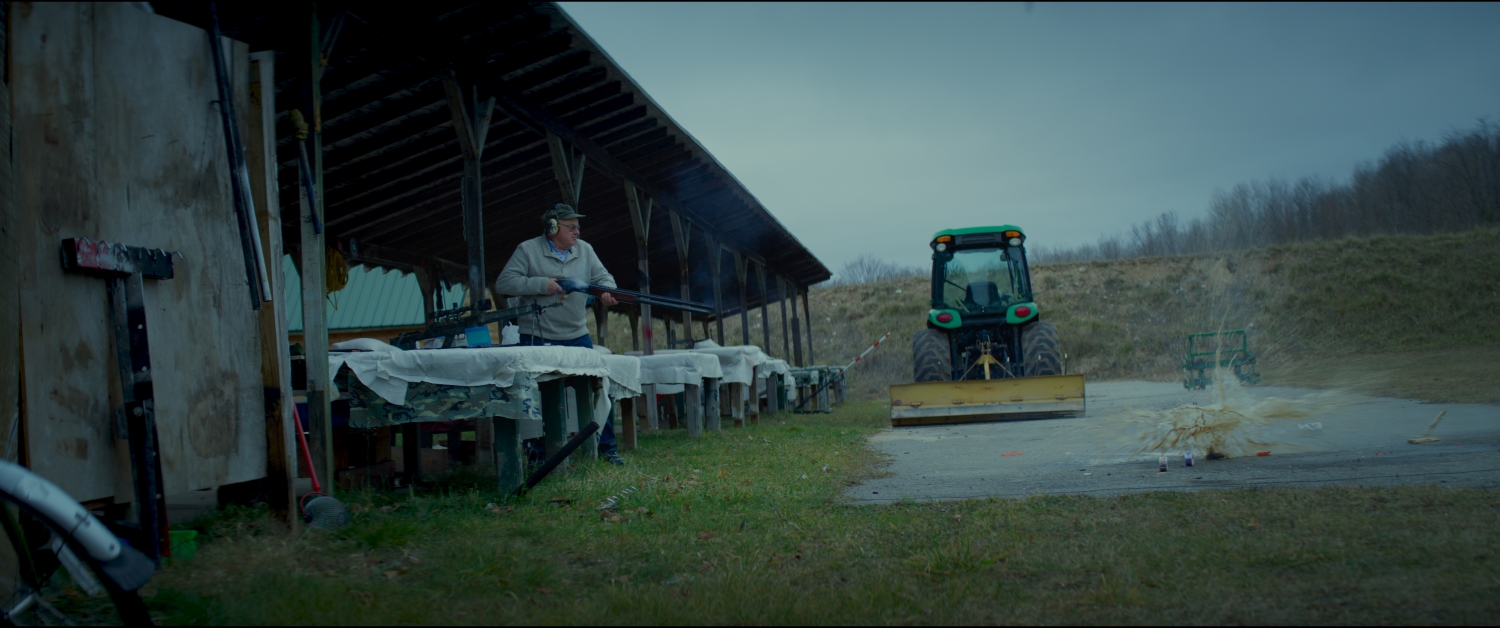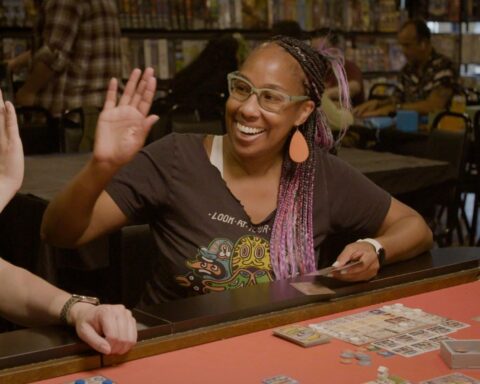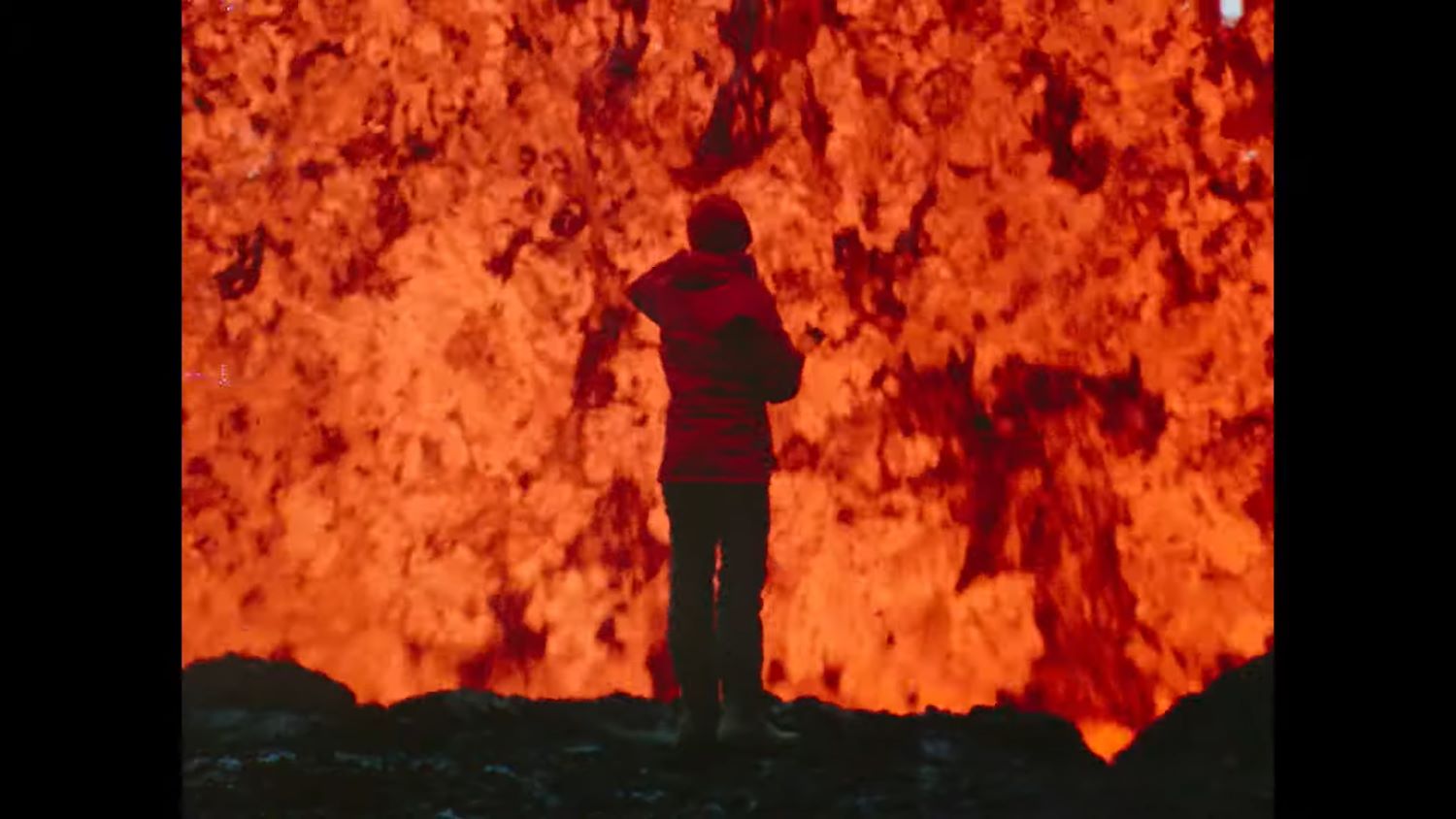Richard Davis shot himself in the chest point blank and lived to tell about it. He did so at least 192 times. And he filmed every shot. These zany images evoke the intersection of America’s Funniest Home Videos and Duck Dynasty as director Ramin Bahrani presents them in the wild-but-true documentary 2nd Chance.
The film, which premiered at Sundance and Hot Docs this year, marks the first feature documentary for Bahrani. 2nd Chance is a natural extension of his dramatic work, though, as it aligns with the rags-to-riches tales of 99 Homes and The White Tiger and draws upon the non-fiction influences of Chop Shop and Man Push Cart. The story of Richard Davis, moreover, might simply be too wild to believe in any other form. As Bahrani sits down with Davis and learns his life’s story, it becomes immediately clear that the pizzaman turned bulletproof vest inventor has an innate knack for fiction. The more 2nd Chance burrows into Davis’s yarns, the deeper it becomes entangled in a web of lies, half-truths, and colourful embellishments.
Bahrani presents all sides to Davis’s story as the company Second Chance collapses under its founder’s unwillingness to see reality. Donning a vest and cheating death so many times leaves Davis with a sense of permanent invincibility. Culpability is another matter, though, as Bahrani seeks answers beyond his unreliable narrator. 2nd Chance introduces members of Davis’s inner circle, as well as people who were saved by Second Chance vests, and a few people Richard shot, literally and metaphorically, along the way. As the competing voices fill the (many) gaps inDavis’s story, 2nd Chance considers the moral ambiguities in which American mythology creates heroes and villains in this terrifically entertaining character study.
POV spoke with Bahrani by Zoom ahead of the release of 2nd Chance on Showtime.
POV: Pat Mullen
RB: Ramin Bahrani
This interview has been edited for brevity and clarity.
POV: I read that you were pitched a dramatic film about Richard Davis, so why make a documentary? His character has such dramatic flair, so I can see why producers might be interested in a biopic.
RB: It does seem like a Nicolas Cage role. [Laughs.] They proposed it as a fiction film, but I looked at the materials, which included a lot of archives. Richard shot himself 192 times and he filmed all of that. Then he filmed eight hours of marketing movies, propaganda films, and comedic films. There was a wealth of archives, so it would’ve been a shame not to use all of that. I thought encountering the real people might be more interesting than a fiction film. When I asked the producers, Johnny [Galvin] and Daniel [Turcan] at Vespucci Group, they thankfully said yes.
POV: How many of those images of Richard shooting himself make it into 2nd Chance? How do you choose which of the 192 to include?
RB: Probably seven, eight, or nine of them. The one that is the most different from any of them comes late in the film. Richard’s wearing a new version of the vest, which they’ve been developing with a new fiber called Zylon, which is five times stronger and has five times less weight to it. It’s not working as well as they think. Rick doesn’t recall the vest, and he shoots himself while wearing it. It’s the only time in any of the footage that he really looked nervous about pulling the gun on himself. That was the one that we zeroed in on from all that footage. There is also a bizarre moment where the father passes down to the son the family tradition of shooting yourself in the chest with a gun. He is going to point the gun at his son and shoot him point blank with a vest, and just can’t do it. We’ve seen Richard’s own father shoot him with a very powerful assault rifle. We see his dad shoot him on a boat, in the groin. It’s some really wacky stuff.
POV: That’s such a great scene with Richard and his son when Richard collapses after his son shoots himself. There’s real great dramatic tension there, but there’s such great drama to the interviews, too. At what point did you realize that you had an unreliable narrator on your hands with Richard?
RB: By the end of the first day, I started to realize that he wasn’t going to accept certain things or say the truth about everything, or at least what I perceive to be more factually accurate. I also started to realize he wasn’t going to be very self-reflective. I thought I was going to encounter someone who would tell me about the amazing things that he did. What he did is amazing and brave, but I thought he would also tell me about certain regrets. He didn’t seem interested. I’m not sure he was even capable of it. I had to go back to my hotel and rethink the movie. He was such a mountain of cognitive dissonance, so I asked the producers to find other characters who we could add to our pool so that I might learn more about Richard. Other voices might contrast or juxtapose his beliefs and his version of the story, and his philosophy about the country.
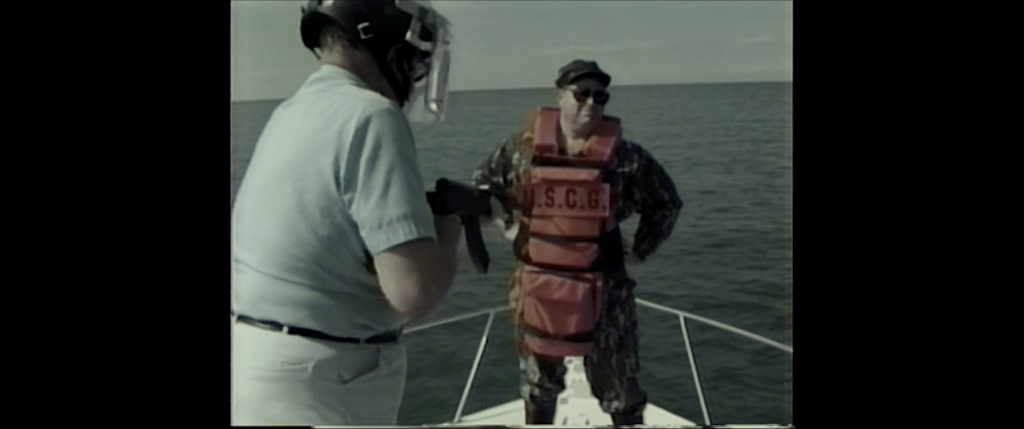
POV: How much did you know about the darker side of Richard’s story before taking on the project?
RB: Some we knew in advance, not all of them and not to the extent that we started to hear. Tim Paczesny, who appears in the film, was tormented in a very wild, crazy way by Richard when he was a teenager. It’s a really nutty story. It comprises one chapter in the film. I knew about that event, but not the details that [Tim] told me about, which got even more nutty. Then there were other things that we knew, like the Zylon case. We had done a lot of research into that. What was unknown to us was that Richard was going to deny things repeatedly. To me, it was a metaphor for the political landscape we’re in. Certain leaders just lie about things. I’m not even sure they even know that they’re lying anymore. That myth building seemed very American to me.
POV: 2nd Chance references that line from The Man who Shot Liberty Valance, “When the legend becomes fact, print the legend.” How do you even fact check a story when the subject doesn’t seem to really grasp or care what the truth of the matter is?
RB: Specifically on that case, other than the reporters from Detroit who had done investigative work and found no facts to back up his claims, we also tried to find out if there were three people [in the shooting that allegedly inspired Davis’s career]. Richard was in an epic gun battle that was recreated by the History Channel, which I love because it’s also part of the mythmaking in terms of how they filmed it for the History Channel—it looks like a Leone movie. We tried to find those three men, but they weren’t alive anymore. We hired a detective to find them and we tried to find more evidence, but we found nothing to back it up. What actually happened that night, I don’t know, but it doesn’t seem to be what Richard claims—some variation on that theme. But as you’ve said, “print the legend.” It was amazing to me that Aaron Westrick, who joined Richard’s company and then became a whistleblower, seems to think that it is a myth. But he also says he prefers to believe in that, which is so telling about how we want our illusions to live on.
POV: There’s a great encounter at the end of the film with Aaron and Clifford Washington, who shot him years before. Was there a conversation about having Richard participate in that encounter, or what was the choice to omit him from that scene?
RB: I love that moment. We found Clifford quite late in the film. After Aaron started talking about him, I needed to meet him. I hoped he’d say “yes” and be smart and poetic in the way he speaks. He was all these things. He was deep, he was rich, he was intelligent, and he had a great humour.
I actually hadn’t planned for them to meet. I interviewed Clifford and we went back to meet him for another round of shooting. It occurred to me to ask Clifford if he would be willing to meet Aaron. Clifford was quite nervous. He was still torn up about having shot the man 40 years ago. It was still haunting him. I think he felt he had to meet him to overcome what he felt. I asked if they’d be willing to meet where they first met, which is where they shot one another. They said yes, but I don’t think Clifford wanted to meet Richard. I don’t think he had the greatest feeling about him.
When I asked Richard what happened to Clifford, he told me he had been killed in a drug deal. I don’t know why he even said that because there was no truth in it. It reveals who Richard is and what he thinks about the world, which is that bad guys are bad and that is it, and that they should be executed without a judge or jury. Clifford stands in stark contrast to that. That reunion is more about restorative justice.
POV: In your director’s statement you say, “Richard should be a hero.” I like the word choice there with “should” because it’s open to interpretation. What did 2nd Chance teach you about the line where heroism begins or ends?
RB: I never went there to make a “takedown” film of Richard, and I hope it doesn’t play that way. I find my feelings about him are very conflicted because there are things about him I like, and there are things about his belief system that I don’t agree with at all. I think Tim Paczesny, the man who was tormented by Richard when he was a teenager, says it best when he talks about yin and yang. He says, “Despite everything Richard did in my life, and he may have been a bad force in my life, he was a good force in thousands of other people’s lives.” I thought that required empathy and depth for Tim to say that when, 10 minutes earlier in the interview, he was shaking with fear about something that happened to him 20-30 years ago. I found him very inspiring.
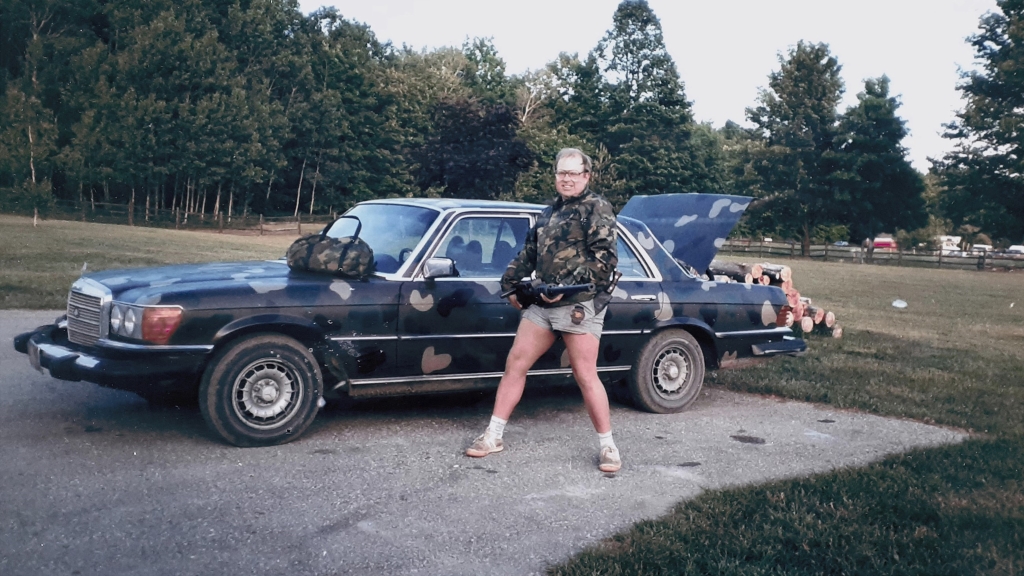
POV: You came to this project after The White Tiger where you have a book and a screenplay, so you know where the story goes, but how do you shape an ending for a film like 2nd Chance?
RB: In the first round of shooting, I was concerned because Richard wasn’t revealing insights into who he was. As I said earlier, he didn’t seem capable of self-reflection. Some of the people we met in the first round of shooting weren’t interesting subjects, either. I had made some short docs where everyone I talked to, you just said “Hello!” and they were interesting—they were in Texas in my movie Blood Kin—and they’re just natural storytellers. I made a film in North Carolina, where I’m from, and people there just talk a lot. They have a great humour.
In the Midwest, I started to encounter that feeling of being in Fargo where you go:
“Tell me about your dreams.”
“They’re good.”
“Do you have any regrets in life?”
“Nope.”
I was like, “Oh my God, this is not going to be a very good film,” but then we found some great characters who really made the film so rich in crafting it with my editor Aaron Wickenden. Joshua Oppenheimer came into post and we had several very long Zoom meetings that were very helpful in shaping the film.
POV: What were some of the ways that Joshua Oppenheimer suggested you shape the story?
RB: I had already broken it up into chapters, but we were still trying to hang onto something like a rise and fall storyline. Joshua proposed that there could be another way to take it. That freed us to find the structure that it has now, which is still broken into chapters. We started to drill down into what was the purpose of each chapter and not have the chapters be beholden to a rise and fall arc. Although it still has that, that’s not what formed the movie in the end.
POV: What draws you to these rags-to-riches narratives, especially with rigged games and broken systems? That’s a through-line in your body of work.
RB: You have it in White Tiger, 99 Homes. Chop Shop has it. Man Push Cart doesn’t have it as much because the guy didn’t make it anywhere, but I’m interested because people hear about the American dream and how you can make it. But doing it is much more complex than it had ever been before. It’s still an amazing country in that you could go from zero to a hundred, but oftentimes to do that requires some disconnection from your centre of morality. Sometimes it’s through ambition and other times, it’s through necessity. Both are interesting for different reasons, but it is more painful and tragic when it’s out of necessity. That’s the way a lot of people in the country are living now.
POV: 99 Home looked at the breakdown of America capitalism and Michael Shannon has that speech about a rigged game but has the game become more rigged in the years since you made that film?
RB: Mike Shannon’s speech about things being rigged in America, about winners and losers…it was as if Trump watched it and started talking about winners and losers all the time, which is such a harsh way to talk about human beings. I think what this film pushed into in a way that 99 Homes didn’t is about mythmaking. Shannon’s character in 99 Homes is just brutally honest. He’s like, “This is the system. It destroyed my dad; it will not happen to me. I’m gonna do whatever I need to do to make sure I don’t get crushed like my dad did by that system.” Here, the character says there isn’t a rigged system. He’s saying it’s actually virtuous. That goes back to what you were commenting on earlier about printing the legend and believing in our myths. No knowing what’s real and not real, where the lies start to bleed into the truth, feels very relevant to the time we’re living in now.
POV: What do documentaries teach you about human behaviour that dramatic films might not?
RB: If I had a camera with me when I was researching Man Push Cart, Chop Shop, or 99 Homes, I could have made docs out of them very quickly. Instead, I had a yellow legal pad and was writing down notes. Meeting all those real people and often casting the real people to play versions of themselves in the stories, which were inspired by things I saw, could have inspired documentaries.
What is different here, of course, is that I can’t then come back to my apartment and shape the story based on all the different things that I thought. I have to shape it based on what I got. You get surprises that you never expected. For example, Richard is the main character. If I was writing the script, I would’ve been tempted to write a guy who was self-reflective. He would’ve had a moment where he realized certain things he had done, and we’d see the consequences of his awakening and he’d understand the pain he had caused other people. The real guy wasn’t like that at all. That pushes you to make something quite different. The other thing in documentaries that I have come to learn is that, when you ask a question, even when they answer it, it’s good not to say anything for a long, long time. The silence can be very interesting, but at a certain point, they often say things that they’ve been wanting to say for a long time, but you haven’t asked them. You might not ever think to ask and they’ll just start talking.
But even going back to the fiction films, for Chop Shop, I remember looking at Frederick Wiseman’s films with the cinematographer and talking about how incredible some of his films looked in terms of the camera movement and framing. We tried to create that in Chop Shop. We would carefully choreograph and create these haphazard shots and frames that would feel like a documentary. I’ve always been hovering around documentaries and I wish I started making them sooner. I’m hoping to make more.
2nd Chance opens in select theaters in NY & LA December 2nd, expanding to additional cities December 9th. Premiering on the SHOWTIME Network Spring 2023.




